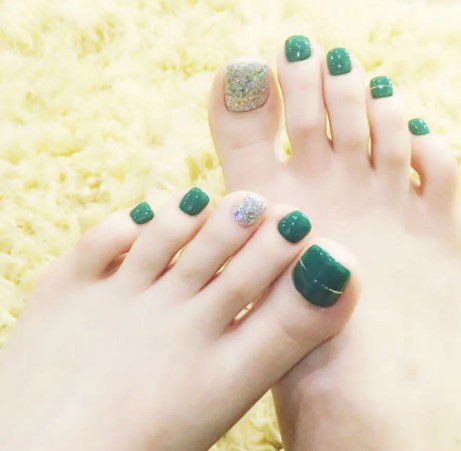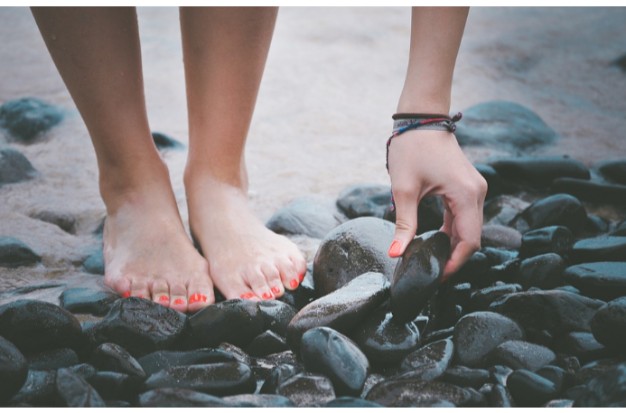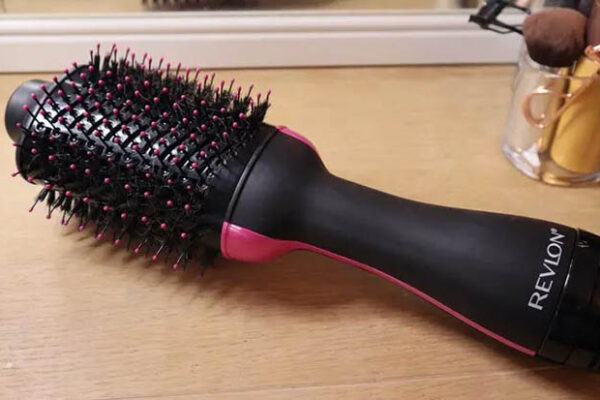Your tootsies will stay in top shape and be decked out with adorable nail art if you schedule regular appointments with a nail professional. How often do we actually talk here, though? How frequently should you get a pedicure? We asked a podiatrist, a nail technician, and a nail health expert, and they all had suggestions.
What Is A Pedicure?
Let’s review the fundamentals. An excellent warm foot bath is a pedicure. The dead skin on your feet is removed, any debris from under your nails is removed, your nails are filed or trimmed, you receive a luxurious lower leg massage, your toenail cuticles are cut, and you have the option of getting a polish application during this bath.
Pedicures are not only a really great way to practice good foot hygiene, but they can also be a wonderful form of self-care. In any case, all of the steps involved in a pedicure must be completed. Make it a fun ritual that you actually look forward to doing!
This is certainly possible in a salon or spa setting, but it’s also simple to complete at home.
3 Major Benefits Of Manicures And Pedicures
These three manicure and pedicure procedures will improve your general health and wellbeing, which you probably weren’t aware of.
1. Hand And Foot Massages
We perform daily tasks with our hands and feet almost constantly. Because of this, those joints and muscles experience much more stress than the rest of our body. Massages of the hands and feet increase blood flow and circulation in these areas, allowing for greater joint mobility and less stress on those overworked muscles. People who type, write, or stand for extended periods of time will especially benefit from this.
2. Nail Cleaning
You probably don’t want to consider the amount of bacteria, dust, and pollutants that your nails come into contact with every day. Many of those unpleasant things have a tendency to become lodged in our nail beds and other difficult-to-reach places over time. Many of us are guilty of touching our faces, biting our nails, and scrubbing those annoying mosquito bites, which only serves to make the situation worse. This has the potential to quickly spread germs to our bodies’ most vulnerable areas. Nail technicians have all the equipment and expertise necessary to thoroughly remove dirt and bacteria, reducing your risk of infection, nail fungus, and illness.
3. Exfoliation
Both beneficial and enjoyable, deep exfoliation is. Over time, calluses form on the bottoms of our feet, especially when we wear heels, work out, and go barefoot. Exfoliating the calluses on the bottom of your feet can help to even out the bottom of your foot and improve weight distribution, which may relieve leg and back pain. Additionally essential for removing dead skin cells, minimizing wrinkles, and boosting collagen synthesis in the skin is exfoliation.
How Lengthy Are Pedicures?
At home or in a salon, a pedicure can be completely customized. Steamy towels, hot stones, opulent scrubs and lotions, long massages, and many other options are available as additions. You can be certain that you will leave feeling brand-new and with brand-new skin on your lovely feet.
The great thing about pedicures is that you can fit them in almost any schedule and budget. It can be quick maintenance that only takes ten to fifteen minutes, or you can go all out and it could take up to ninety minutes.
How Frequently Should You Get Manicures And Pedicures?
Your lifestyle can have a big impact on how frequently you get your nails and feet done. Naturally, your nails will require a little more attention if your hands are subjected to more abrasion in your daily activities or hobbies. To keep your nails in the best condition, experts advise waiting two to three weeks in between each manicure and pedicure. Your cuticles and nails will start drying out and getting jagged during this time. Most nail polishes or coats start to chip away as well.
The best way to maintain healthy nails in between salon visits is to take care of them. Daily nail care can be accomplished by consuming vitamins and minerals.
For instance, keeping your nail and the surrounding skin hydrated will maintain the elasticity of the skin around the nail and fight peeling and dryness, which quickly cause hang-nails. Simply apply a drop of your preferred fatty oil, such as argan or avocado oil, to the tips of your toes and fingers several times per day. You’ll never experience the dangers of a hang-nail again, and your nail technician will love you for it.
The intensity of the treatment also determines how frequently you should get a pedicure. As anyone who has mastered the art of performing a home pedicure will attest, pedis can range from a quick coat of varnish to a 90-minute battle involving more tools than Edward Scissorhands. Every week or two, a cosmetic file and polish is acceptable. But for particular issues, a more thorough but less frequent pedicure may be required.
Do Massages Help Your Feet?
Yes, provided you stay within reasonable limits. “Yes, getting a pedicure is good for your feet. Not only do they make your feet look better by exfoliating away dead skin cells, softening the cuticles, and having polish on, but it will also help with circulation and keep your feet soft,” confirms Gray.
Many of the positive aspects of a professional pedicure can — and should — be repeated at home, which is great news for those who love to take care of their feet. This is particularly true if your feet need a little extra tender loving care. Follow Gohil’s foot MOT checklist between appointments:
Daily:
- “Every day, wash your feet in warm, soapy water. Always remember to clean and dry your feet thoroughly, between the toes, as this is where fungus is most likely to grow.”
- “Use a foot cream with a specific formulation to moisturize (not your best body moisturizer!) every day. It should be applied to your feet and gently massaged into the skin; try it right before bed to repair your feet overnight. Include it in your wind-down routine.”
Weekly:
- “To gently remove any dead skin cells throughout the week on a dry foot, use a foot file or pumice stone. Next, apply a good foot cream containing urea.”
- “Make sure your nails are regularly and properly cut using nail clippers or nail scissors, and check your toenails every week. Always remember to leave a tiny white free edge when trimming your nails. Ensure that the tools you use to trim the nails are fresh and unique.”
Do Pedicures Only Apply To Special Occasions?
No longer just for holidays, weddings, or your yearly beach trip, pedicures are now a common practice. It’s best to maintain your feet on a regular basis to keep them healthy. Each person’s version of this may be different. It truly depends on the “wear and tears” you put on your feet each day.
How frequently you should get a pedicure doesn’t have a one-size-fits-all standard. If you lead a very active lifestyle, you might decide to get pedicures more frequently.

Tips To Help In Between Pedicures
There are methods you can use if you really want to keep your pedicure longer. Most of these items most likely already exist in your home. Here are some best practices that you can quickly incorporate into your daily routine.
- Exfoliate: The life of your pedicure can be greatly increased by quickly running a buffer across your heels while you are in the shower. Over time, less work is required as a result of routine dead skin removal. It can build up into those calluses if you let it stand, which feel like they need to be removed with a power tool.
- Cuticle Oil: You can use cuticle oil on more than just your hands. You must acknowledge that you’ve noticed the dry skin around your toenails. You can also add moisture to that parched area by applying a dab of cuticle oil around your toenails.
- Top Coat: If you have polish on your toenails, you can always add an additional layer of topcoat a few days after the initial application to prolong the life of your polish.
- Lotion and socks: One of our favorites has to be this. Ideally, you have at least one pair of socks and lotion in your medicine cabinet. This is a fantastic way to seal in some moisture, provided you didn’t just apply a fresh coat of paint. Simply apply your preferred lotion to your feet and put on some warm socks. You can ensure that your baby-soft skin lasts by letting that sit for about 30 minutes a few times a week.
- Treat Your Feet: Check your feet, if you haven’t already. Examine your skin for any blisters, sores, or rough patches and treat them right away to avoid dealing with more serious issues. Always remember that taking care of your body involves prevention.
What Is The Purpose Of Getting A Pedicure?
No matter if you are a man or woman, you should definitely look to get regular pedicures because they have many advantages. Here are some of the benefits:
Relaxation
A massage that comes with getting a pedicure can be very calming. The entire procedure has a calming and healing effect on the patient’s stress levels. All of us are accustomed to our daily hygiene routines, but many of us frequently neglect to take care of our feet.
Improved Circulations
Your feet and calves will feel less tense and your blood circulation will also improve. Your entire body’s flexibility and blood flow may be enhanced as a result.
Skin Hydration
Lotions, oils, and warm water are typically used in regular pedicure procedures. All of these things work together to hydrate, safeguard, and provide essential minerals for your skin. Additionally, all of this helps keep the moisture in your skin. As a result, it will be less likely for your feet to develop blisters, cracks, or other skin issues.
Reduced Chances Of Infection
Clean, well-cared-for toenails won’t turn inward and spread an infection. Keeping your feet clean and free of bacteria helps to prevent the growth of fungi and other diseases.
Helps You Spot Issues Early On
By getting regular pedicures, your pedicurist will regularly examine your feet for indications of infections and diseases and identify them early on so that you can treat them quickly.
Make sure to change this and regularly take care of your feet because it won’t take much of your time. Feet are frequently neglected and receive little attention. Visit Merchant & Rhoades right away to get your weekly pedicure!
Summary
When it comes to maintaining your personal hygiene, there are no set rules. To help you look and feel your best, all we can do is offer gentle advice. You are most likely overdue for a pedicure if you feel like it might be time. As you can see, there are constant indications that some preventative maintenance may be necessary.





